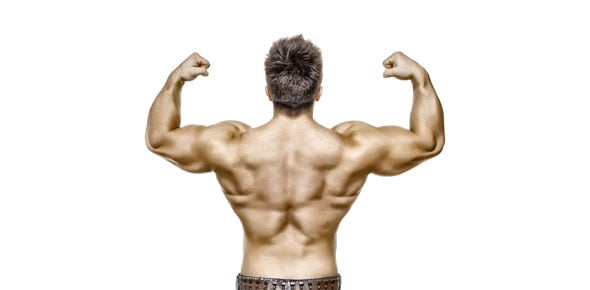Necturus Branchiomeric And Hypobranchial Muscles

A quiz over Necturus branchiomeric and hypobranchial muscle identification.
Questions and Answers
- 1.
Name the muscle.
- A.
Intermandibularis
Correct Answer
A. Intermandibularis -
- 2.
Name this muscle.
- A.
Geniohyoideus
Correct Answer
A. GeniohyoideusExplanation
The correct answer is geniohyoideus. The geniohyoideus is a muscle located in the neck region. It originates from the mental spine of the mandible and inserts onto the hyoid bone. This muscle plays a role in the movement and stabilization of the hyoid bone, which is important for various functions such as swallowing and speaking.Rate this question:
-
- 3.
Name the muscle.
- A.
Levatores arcuum
Correct Answer
A. Levatores arcuumExplanation
The correct answer is "levatores arcuum." The term "levatores arcuum" refers to a group of muscles located in the neck. These muscles are responsible for elevating the arches of the vertebrae, providing support and stability to the spinal column. They play a crucial role in maintaining proper posture and facilitating movement in the neck region.Rate this question:
-
- 4.
Name the muscle.
- A.
Adductor mandibulae externus
Correct Answer
A. Adductor mandibulae externusExplanation
The correct answer is adductor mandibulae externus. This muscle is responsible for the adduction of the mandible, which means it brings the lower jaw closer to the upper jaw. It is an external muscle located in the jaw region.Rate this question:
-
- 5.
Name the muscle.
- A.
Interhyoideus
Correct Answer
A. InterhyoideusExplanation
The muscle being referred to in this question is the interhyoideus muscle.Rate this question:
-
- 6.
Name the muscle.
- A.
Sphincter coli
Correct Answer
A. Sphincter coliExplanation
The muscle named "sphincter coli" refers to the muscle that controls the opening and closing of the anus. It is responsible for regulating the passage of feces from the rectum to the outside of the body. The term "sphincter" refers to a circular muscle that constricts an opening, and "coli" indicates its location in the colon. This muscle plays a crucial role in maintaining bowel continence and preventing involuntary bowel movements.Rate this question:
-
- 7.
Name the muscle.
- A.
Rectus cervicis
Correct Answer
A. Rectus cervicisExplanation
The correct answer is rectus cervicis. Rectus cervicis is a muscle located in the neck region. It is a deep muscle that runs along the front of the cervical spine. This muscle helps to stabilize and support the neck, allowing for movements such as flexion and extension. It is part of the deep neck flexor muscles and works in conjunction with other muscles to maintain proper posture and facilitate head movements.Rate this question:
-
- 8.
Name the muscle.
- A.
Cucullaris
Correct Answer
A. CucullarisExplanation
The muscle named "cucullaris" is a muscle found in some fish species, such as lampreys, that is responsible for controlling the movement of the gill cover or operculum. It helps in the process of respiration by expanding and contracting the gill chamber, allowing water to flow over the gills and facilitating oxygen exchange.Rate this question:
-
- 9.
Name the muscle.
- A.
Depressor mandibulae
Correct Answer
A. Depressor mandibulaeExplanation
The correct answer is "depressor mandibulae." The depressor mandibulae is a muscle that is responsible for depressing or lowering the mandible, or lower jaw. It is located in the lower part of the face and works in opposition to the muscles that elevate the mandible. This muscle is involved in actions such as opening the mouth, chewing, and speaking.Rate this question:
-
- 10.
Name the muscle.
- A.
Branchiohyoideus
Correct Answer
A. BranchiohyoideusExplanation
The correct answer is "branchiohyoideus." The branchiohyoideus is a muscle found in the neck region of certain animals, including fish and amphibians. It is responsible for assisting in the movement of the hyoid bone, which is involved in swallowing and vocalization. The muscle is named based on its location and function, with "branchio" referring to the branchial or gill region and "hyoideus" referring to the hyoid bone.Rate this question:
-
- 11.
Name the muscle.
- A.
Adductor mandibulae anterior
Correct Answer
A. Adductor mandibulae anteriorExplanation
The given answer "adductor mandibulae anterior" is the name of the muscle being referred to in the question. This muscle is responsible for the movement of the jaw, specifically the action of closing the jaw. It is located in the anterior region of the mandible, which is the lower jawbone. The adductor mandibulae anterior muscle plays a crucial role in chewing and biting actions.Rate this question:
-
Quiz Review Timeline +
Our quizzes are rigorously reviewed, monitored and continuously updated by our expert board to maintain accuracy, relevance, and timeliness.
-
Current Version
-
Mar 20, 2023Quiz Edited by
ProProfs Editorial Team -
Apr 16, 2008Quiz Created by
Drderting
- Aura Quizzes
- Axial Skeleton Quizzes
- Body Mechanics Quizzes
- Body Parts Quizzes
- Body System Quizzes
- Chest Quizzes
- Ear Quizzes
- Endocrine Quizzes
- Eye Quizzes
- Feet Quizzes
- Gland Quizzes
- Limb Quizzes
- Musculoskeletal Quizzes
- Pain Quizzes
- Pharmacodynamics Quizzes
- Piercing Quizzes
- Spanish Body Parts Quizzes
- Thorax Quizzes
- Urine Quizzes
 Back to top
Back to top


